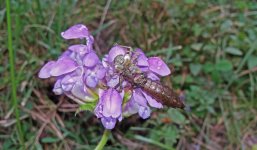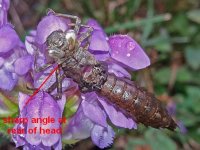al-Natural
Registered Member
Good morning,
I found this exuviae on a Prunella genus wildflower by a mountain stream in Cantabria, at 400 m.a.s.l.
I have no ID guide around. I thought that could be a Cordulegaster boltonii but the abdomen far end in this species shows three spines and this shows just two!
Any idea?
Thank you very much in advance!
Jorge
I found this exuviae on a Prunella genus wildflower by a mountain stream in Cantabria, at 400 m.a.s.l.
I have no ID guide around. I thought that could be a Cordulegaster boltonii but the abdomen far end in this species shows three spines and this shows just two!
Any idea?
Thank you very much in advance!
Jorge





